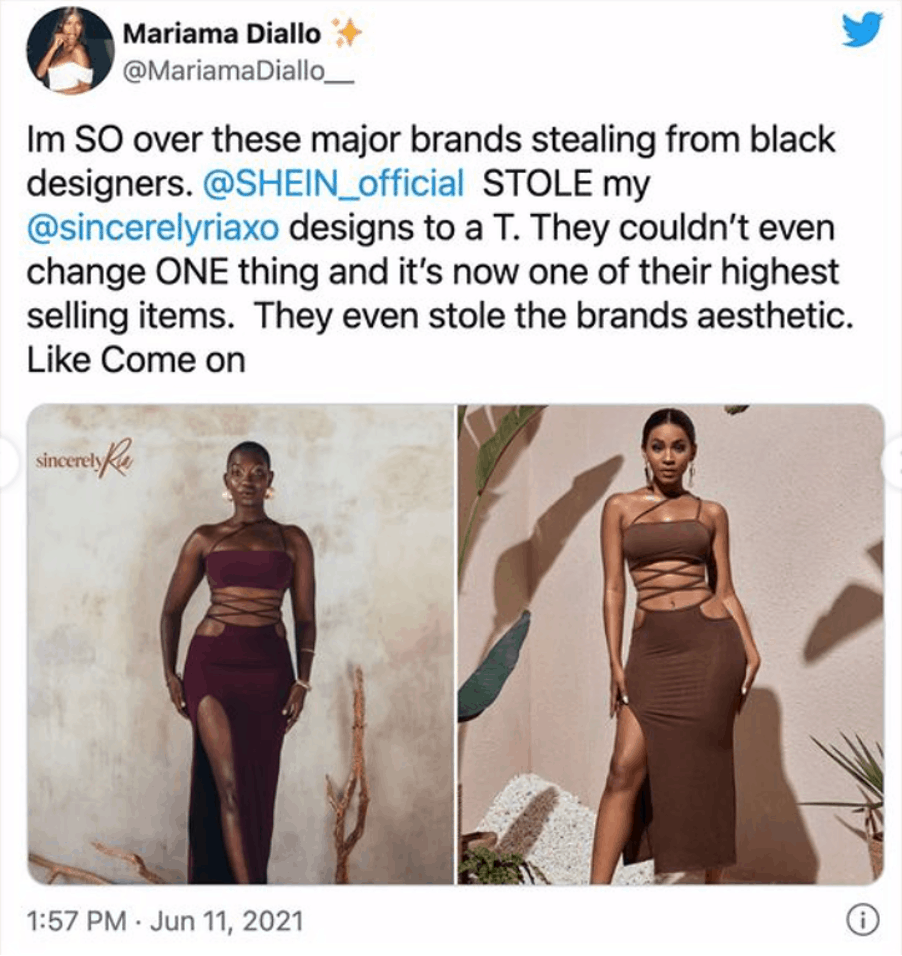27 Jul 27th July Shameless Shein – Who actually is Shein?

When you think of Shein what do you think? I think of the fashion giant that is taking the world by storm with it’s fashionable and affordable items. But the giant is not what it seems.
Where did Shein come from?
Shein appeared on everyones radar in the late 2010’s, but it has been going since 2008. CEO and Founder Chris Xu is estimated to be worth £15 billion according to Forbes, yet he is one of the most mysterious of rich people on the planet, with almost nothing being posted about him or his personal life online. Hidden between Boohoo and PrettyLittleThing, Shein did not make its mark within the fashion industry until 2020 when there was a boom in online shopping. The pandemic saw retail stores close and online shopping increase. Instead of popping to the local shops to pick up a new pair of leggings, delivery orders were being received multiple times a week, filled with that month’s trends. Shein is the word that is on everyones lips. Whenever I ask someone where their dress is from, 60% of the time they reply Shein and I have to restrain myself from externally cringing. After scrolling through the site, many items were photogrtaphed on stunning models in beautiful locations shot proffessionally, with the occassional influencer popping up on there too. The shiny and glossy outside of the fashion retailer hides a lot of what is going on on the inside.
Why did Shein score 0/100 on a sustainability assessment?
Re/make, a “community of fashion lovers, women rights advocates, and environmentalists on a mission to change the industry’s harmful practices on people and our planet.” scored Shein as 0/100 on their sustainability assessment. That’s right. Not a single part of Shein was seen as sustainable. The assessment covers various aspects including Greenwashing, worker conditions, transparency and if the business is actually “doing good” instead of just avoiding doing any harm. For Re/make to even consider a brand, they need to score 50/100 or higher on their sustainability assessment. This is because even thtoguh from the outside they seem to have made an effort when it comes to protecting the environment, most of it is just words…
“Our factories are ISO certified.”
ISO develops the standards but they do not issue certifications – this is where external companies come in to assess instead.
Shein “do [their] best to source recycled fabric, such as recycled polyester, a non-virgin fibre that has little impact on the environment and reduces damage to the original material.”
Doing their best – not a quantitative metric that can be put into perspective.
They do not say where their factories are nor who they employ to work in the factories
Quality – it is no secret that this fast fashion giant makes clothes for literally “fast fashion”. Once you have worn it a few times, it supposedly “falls appart” and does not last. This in turn encourages their consumers to buy more and go for quantity of quality whereas we all know we should be aiming for quality over quantity….

“Shein stole our design”
Sustainability is not the only aspect Shein is falling down on. Loyalty to other brands is completely ignored when they are designing new items. “Shein stole our design” is a quote I have started to see more and more on Instagram and other social media outlets. Small independent creative businesses are being stripped of their products which are being mass copied without giving them any credit.
An example is Sincerely Ria (Instagram: @sincerelyria.xo) whose unique dress cut has been duplicated by Shein for a fraction of the price, lower quality and no credit. All the time and effort that went into the design, pattern and asthetic as well as the building of their independent brand and ethos has been lost once it is copied by Shein. Many BIPOC designers are being copied too but that leads into a whole other conversation which won’t be touched on in this blog post yet.
We need to start holding brands but also influencers accountable for what they do and what they promote. These companies are creating a brand image that is completely false and hiding what is actually happening.
We as consumers only see the good side of these brands; the fashionable clothes, the beautiful models, the quick delivery (in most cases) and the glamorized lifestyle. It’s time for companies to be truthfully transparent because it is not our responsibility to do the research behind each brand.


